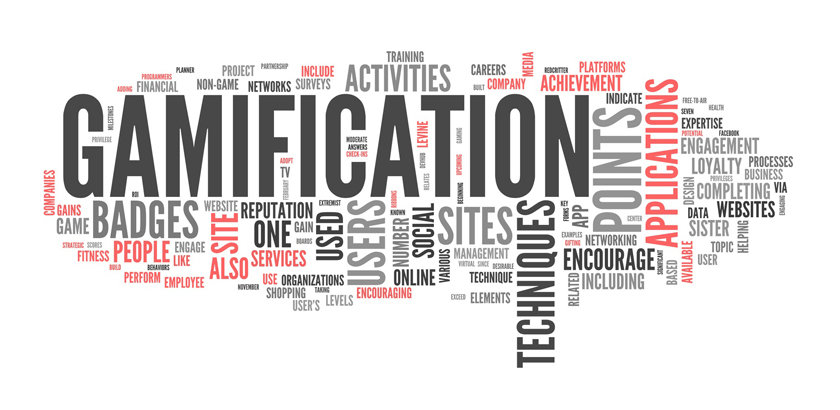Despite the bold predictions of several industry pundits about its impact on eLearning, gamification has yet to fully emerge as a driving force, although it’s undoubtedly finding its way into more and more innovative enterprises.
This article is a large excerpt from the one published on http://elearning-reviews.traineasy.com, which you can read the full by clicking on the link below: Read the full article >

Gamification, in a Nutshell
Basically, gamification is the practice of using the dynamics of games (scoring points, gaining rewards for good performance and merit, positional ranking etc.) in a non-game context.
In education, the technique is used to increase engagement, by getting learners interested in what they’re learning, and motivated to do better.
The Driving Forces
Research indicates that people who enjoy what they’re learning and are engaged with its content are more eager to continue with a course. Not only that: learners’ brains are 68% more active when they’re doing something they enjoy, and are able to absorb 84% more information. It’s easier to retain that information, as well.
Engaged learners are keen to improve on their skills – and encourage others to do the same. Research figures from Gallup and the Hay Group suggest that engaged workers generate 43% more revenue for their parent organisations, and take far fewer sick days than those less keen (2.69, as against 6.19).
For employers, eLearning can give a 70% reduction in training costs, compared to more traditional methods – with less impact on work, as employees are free to train in their own time. It’s also apparent that workers given eLearning opportunities at work tend to stay with the company.
Subjective or Objective?
Performance reviews – those annual “bell curve” assessments of employees to decide their future status, salary, and prospects – appear to be on the decline. Their results are often highly subjective, reflecting more the inclinations of the assessment officer than the performance of those assessed.
By contrast, Objectives and Key Results (OKR), a technique developed by Intel and used by the likes of Twitter, Google, and LinkedIn, takes a different approach – one in keeping with the principle of gamification.
OKR is used to define Objectives in the workplace; ambitious goals made achievable through Key Results, or performance milestones. Organisations can use different levels of transparency, to enable workers to see each other’s Key Results and Objectives – and co-ordinate their efforts, while “competing” against each other, to achieve results.
Inspiring Performance
The competition, ranking, and reward aspects of gamification will be the key drivers, here.
By extending the reach of game elements from on-the-job training to day-to-day objectives and performance assessment, the leader boards, merit badges, and bonuses may become an integral part of corporate culture.
With the development of appropriate games for corporate use being a time-consuming and targeted process, expect the continued rise of specialist designers marketing bespoke games for use by different organisations.
Age Matters
Millennials (people born between 1980 and 2000) already constitute most of the workforce, and by 2020 will have taken up half of the employed population, world-wide. So their perspective on things will become a determining factor in how corporate training is carried out.
Having grown up with digital technology and media, this group can spot a poor effort to liven up dull corporate training or work experience with badly executed video games as the lame attempt it actually is.
But they’re also uncomfortable with rigid hierarchies, and expect at least some level of transparency, with information freely available and widely shared. If this means ready access to the performance of their workmates and themselves through leader boards and monitoring, then so be it.
For Millennials, feedback is key to personal improvement and progress. And if that information can be relayed digitally, within a well-implemented and engaging gaming format, it’s a win-win.
…

